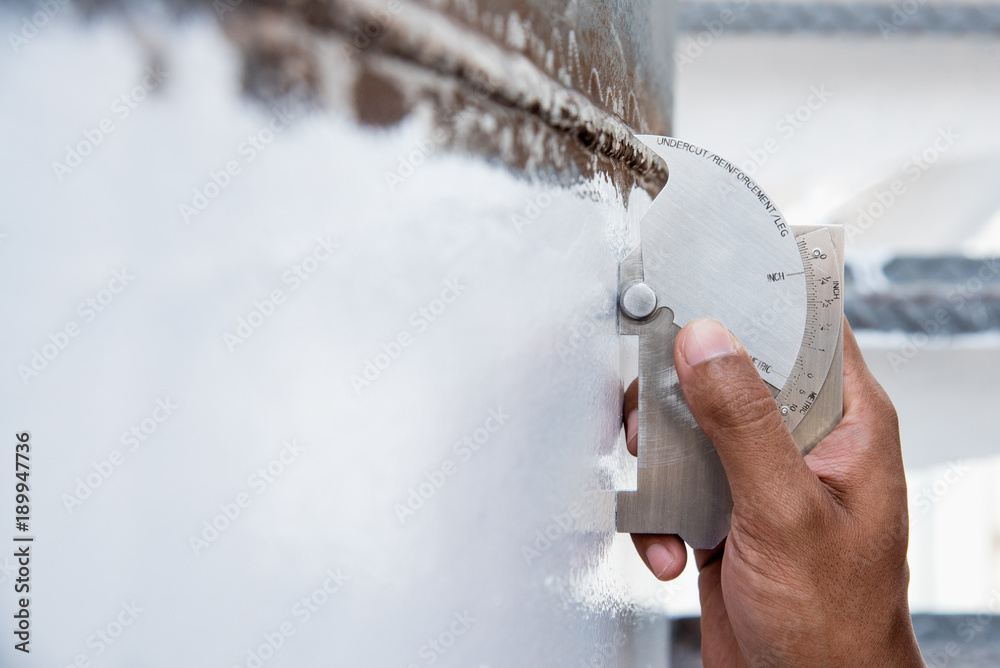Why Regular Tank Welding Inspection is Crucial for Structural Stability
Why Regular Tank Welding Inspection is Crucial for Structural Stability
Blog Article
A Thorough Review of Storage Tank Welding Examination Requirements and Methodologies for Improved Weld Top Quality and Efficiency
The relevance of welding inspection requirements in the production of containers can not be overstated, as they offer as the backbone for guaranteeing weld honesty and functional dependability. Numerous inspection techniques, including aesthetic assessments and advanced non-destructive testing methods, are critical in identifying potential problems that could compromise efficiency.
Importance of Welding Inspection Specifications

Welding examination standards include a range of standards, including product specs, welding treatments, and qualifications of personnel associated with the welding procedure. By applying these criteria, companies can systematically determine and fix potential problems, consequently lowering the possibility of costly repairs or devastating failings. In addition, extensive assessment methods foster a culture of accountability and precision, motivating welders to preserve high degrees of workmanship.

Common Welding Examination Techniques


Ultrasonic Evaluating (UT) is one more prevalent method, utilizing high-frequency acoustic waves to spot inner imperfections that may not show up on the surface. This technique is particularly reliable for determining gaps or incorporations within the weld steel. Magnetic Fragment Evaluating (MT) is likewise widely utilized, specifically for ferromagnetic materials, as it discloses surface area and near-surface issues through the application of magnetic areas and ferrous particles.
Furthermore, Fluid Penetrant Testing (PT) detects surface-breaking issues by applying a penetrant to the weld and then making use of a developer to extract the penetrant. Each of these methods adds to a thorough evaluation strategy, making certain that welds fulfill the rigid high quality criteria required in container building and construction.
Regulative Specifications and Compliance
Regulatory criteria and conformity are necessary parts in ensuring the safety and reliability of welded frameworks in container construction - Tank Welding Inspection. These standards offer to develop minimum needs for material homes, welding procedures, and assessment techniques, thus lowering the risk of structural failings and improving overall efficiency
Key organizations, such as the American Society of Mechanical Engineers (ASME) and the American Welding Society (AWS), offer standards that are commonly embraced in the sector. Conformity with these standards not only makes certain adherence to best techniques but likewise satisfies legal and contractual commitments, safeguarding the passions of stakeholders.
Regulative bodies often mandate adherence to details codes, such as ASME Code her latest blog Section IX for welding certifications and API 650 for bonded tanks. These codes lay out demands for welding techniques, certifications of workers, content and testing methods to verify weld honesty.
Regular audits and examinations are important to keeping compliance, as they help determine variances from established standards. Non-compliance can cause considerable charges, project hold-ups, and safety hazards. Hence, a robust understanding of governing standards and a commitment to compliance are critical in attaining premium and sturdy bonded container frameworks.
Non-Destructive Testing Methods
How can the stability of bonded structures be ensured without causing damage? Non-destructive screening (NDT) techniques supply a robust option, making it possible for inspectors to review weld quality without jeopardizing the product - Tank Welding Inspection. Among the most common NDT strategies are ultrasonic testing (UT), radiographic screening (RT), magnetic bit screening (MT), and color penetrant screening (PT)
Ultrasonic screening utilizes high-frequency sound waves to identify internal imperfections and define product buildings. It provides precise measurements and is especially reliable for thick products. Radiographic testing includes passing X-rays or gamma rays via the weld, developing photos that expose architectural issues such as splits or spaces. This technique is invaluable for assessing the stability of intricate welds.
Magnetic fragment testing is suited for ferromagnetic materials, where electromagnetic fields reveal surface and near-surface suspensions. Color penetrant testing utilizes a fluid color to highlight surface-breaking defects, making it an effective technique for non-porous products.
Each of these NDT approaches has unique advantages, permitting thorough evaluations tailored to specific materials and welding procedures. By applying these techniques, industries can make certain the integrity and safety and security of bonded frameworks, inevitably improving overall efficiency.
Enhancing Weld High Quality With Assessment
Effective examination plays an essential duty in enhancing weld top quality, working as an essential checkpoint in the manufacture procedure. By determining possible defects early, evaluations mitigate the threat of jeopardized architectural honesty and ensure conformity with sector standards. Using a combination of aesthetic evaluations, non-destructive testing (NDT) approaches, and mechanical analyses, assessors can detect concerns such as porosity, cracks, and incomplete fusion.
Applying a robust examination procedure not just improves the general quality of welds but also cultivates a culture of responsibility amongst welders and makers. Routine training and qualification of inspection personnel ensure that they are outfitted with the required abilities to recognize and address possible problems efficiently. This aggressive approach decreases rework and connected expenses, inevitably contributing to forecast efficiency.
Moreover, comprehensive documents of examination findings offers valuable insights right into reoccuring problems, promoting constant enhancement in welding techniques. By leveraging innovative technologies, such as automated ultrasonic testing or electronic radiography, weld quality can be enhanced with more exact evaluations. To conclude, a rigorous evaluation process is crucial in accomplishing top quality welds, making certain safety, reliability, and durability in container manufacture.
Conclusion
In final thought, you could try these out the application of extensive tank welding evaluation requirements and methodologies is necessary for making certain weld honesty and performance. By using a mix of aesthetic evaluations, non-destructive screening techniques, and adherence to regulatory requirements, organizations can efficiently identify and alleviate possible flaws.
Report this page